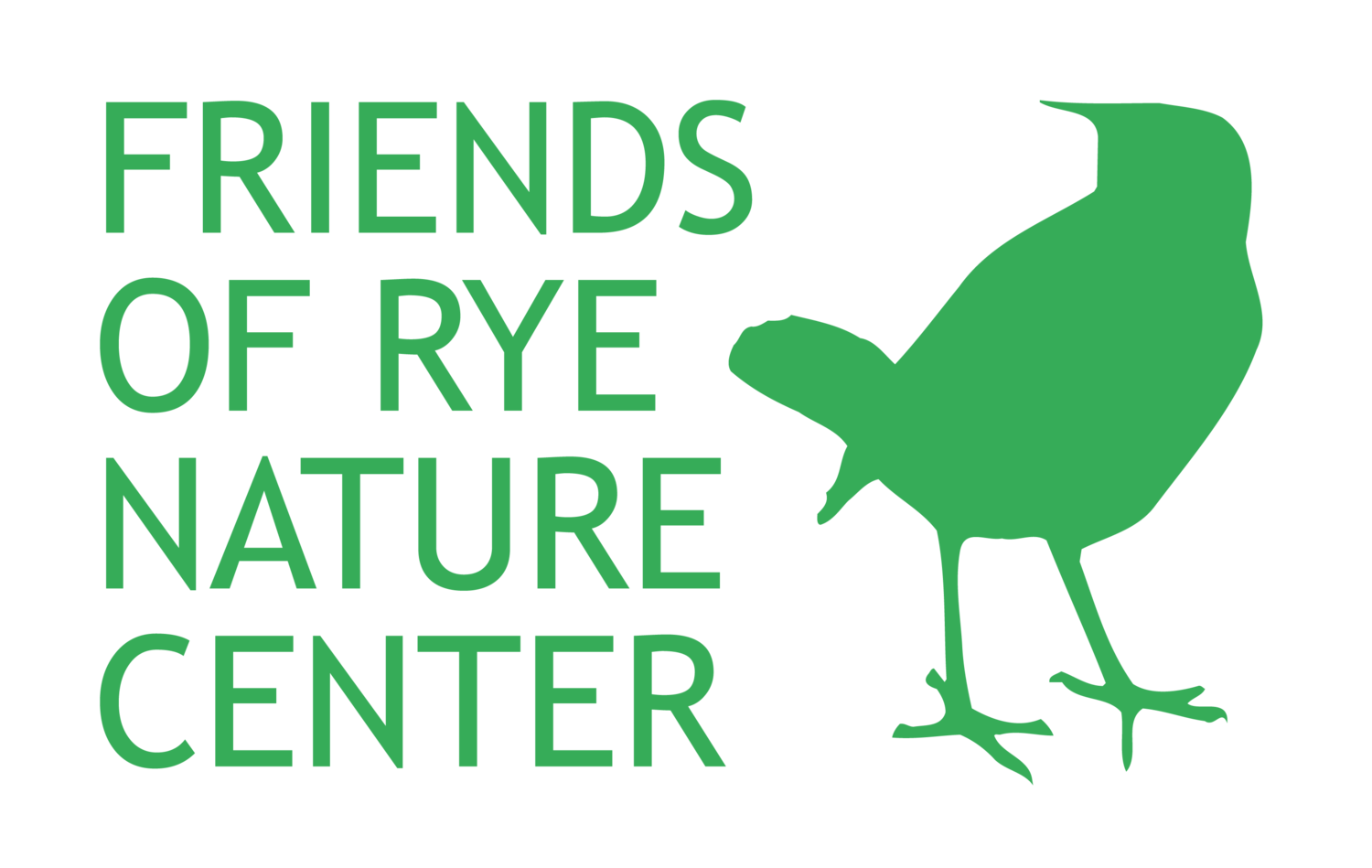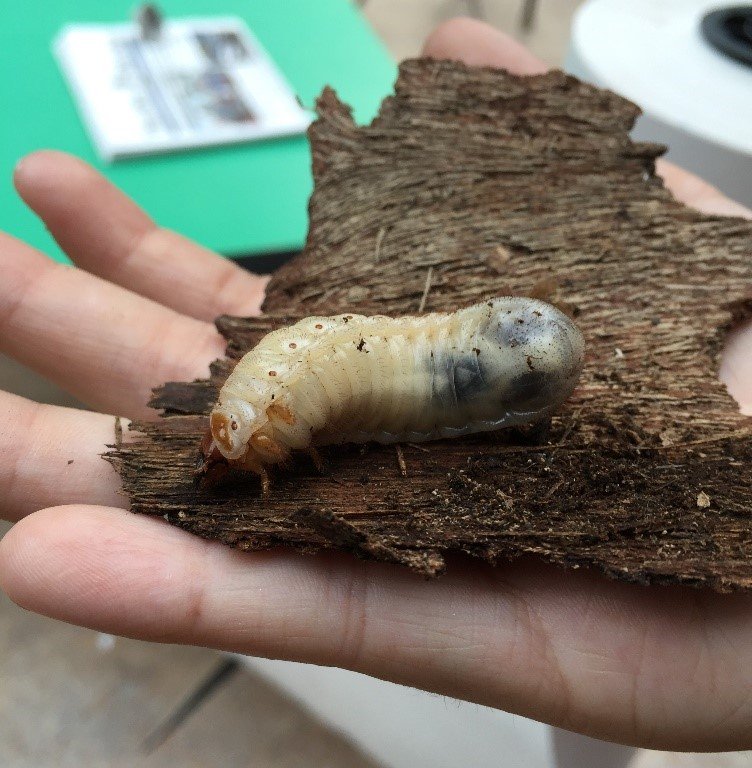—Eli Schaffer, Environmental Educator
A few weeks ago, staff had to take down a rotten tulip tree. Afterwards, someone came into the building and told me that he had seen giant grubs inside the tree when it came down, "like something out of the rainforest." I was immediately excited to see what had been found since the vast majority of insects in our area are smaller than the size of a quarter. As soon as I could, I gathered my Preschool Ecology class for a hike, grabbed a small specimen tube and a shovel, and went up the Telephone Line trail. When we started searching around the downed tree, a child shouted, "Eli! Look what I found!" I ran over to see a tiny hand holding one massive grub.
A grub is the larval stage of a beetle's life cycle. During this stage, a baby beetle eats as much as it can and grows hundreds or thousands of times larger than the egg it hatched out of. The students and I were all eager to find out what kind of beetle we had found. However, the task of identifying an insect can be tricky due to the overwhelming number of species. Prepare to be numerically amazed!
Insects, like all animals, are categorized into different orders, each with its own subgroups. These categories are essential for knowing how any species is related to another. To put the numbers of different insect species into perspective, there are 5,416 known mammal species compared to almost one million known insect species. Some entomologists estimate there are tens of millions of species still waiting to be identified!
I knew that the grub we had found was a beetle because of the size of the larvae. There are close to 400,000 described species of beetles, so we would have to get more specific to have any hope of putting a name to our new crawly friends. I was able to determine that the small brown breathing holes along the side of our larvae, called spiracles, are in a pattern indicative of scarab beetles. Still, there are over 17,000 species of scarab beetle! Further digging through insect identification books brought me to the rhinoceros beetle. Feeling as though I must have hit the bottom of this taxonomic rabbit hole, I was exasperated to learn that there are over 350 different kinds of rhinoceros beetles! Alas, I had gone as far I could for now.
In order to find out what kind of rhino beetle we found, all we have to do is wait for the little guys to pupate - the process by which most insects transform into their adult life stage. There's only one final hitch - some rhino beetle larvae take two years to reach adulthood!
Adult rhinoceros beetles are most easily differentiated by the beautiful horns protruding from the front of their heads. Image: brittanica.com


